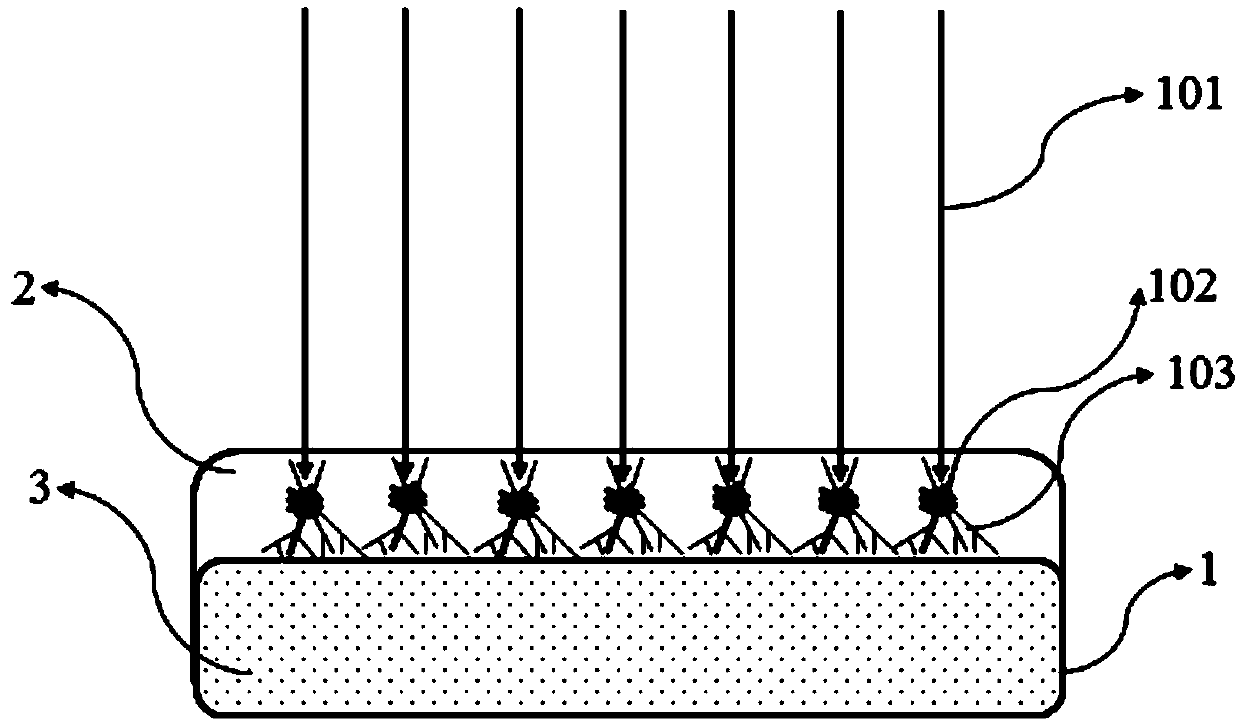Laser paint removing method for polyimide coating enameled wire
A polyimide coating, enameled wire technology, applied in the direction of circuit/collector parts, electrical components, circuits, etc., can solve the problems of long laser processing time, high power demand, high cost, reduce energy consumption, laser Effects of power reduction and low conversion efficiency
- Summary
- Abstract
- Description
- Claims
- Application Information
AI Technical Summary
Problems solved by technology
Method used
Image
Examples
Embodiment 1
[0047] A kind of laser depainting method of polyimide coated enameled wire provided by the invention, the steps are:
[0048] a. Surface pretreatment
[0049] like Figure 1-2 As shown, use the ultraviolet laser to set the laser power of the first laser beam 101 to 5W and the frequency to 30KHz, adjust the first laser beam 101 to focus on the paint layer 2 of the enameled wire 1 to the smallest spot diameter, and scan the entire paint layer without crossing the path 2 Rough without visible smoothness, the scanning frequency of the first laser beam 101 is 1 time, and the scanning path is to scan alternately from the right end of the enameled wire to the left end in a U shape on both sides of the width, figure 2 The middle, left, and right directions are the length direction of the enameled wire 1, and the up and down directions are its width direction, and the following Figure 4 and Image 6 in the same way;
[0050] b. Heating to remove paint
[0051] like Figure 3-4 ...
Embodiment 2
[0057] Except the following parameters: the spot diameter of the second laser beam 201 is 1.4 times the width of the paint layer 2, the interval between two adjacent scans is 1 second, and the scan is repeated 8 times. The paint removal method of this embodiment is the same as that of Embodiment 1.
Embodiment 3
[0059] Except the following parameters: the spot diameter of the second laser beam 201 is 1.5 times the width of the paint layer 2, the interval between two adjacent scans is 5 seconds, and the scan is repeated 3 times. The paint removal method of this embodiment is the same as that of Embodiment 1.
PUM
 Login to View More
Login to View More Abstract
Description
Claims
Application Information
 Login to View More
Login to View More - R&D
- Intellectual Property
- Life Sciences
- Materials
- Tech Scout
- Unparalleled Data Quality
- Higher Quality Content
- 60% Fewer Hallucinations
Browse by: Latest US Patents, China's latest patents, Technical Efficacy Thesaurus, Application Domain, Technology Topic, Popular Technical Reports.
© 2025 PatSnap. All rights reserved.Legal|Privacy policy|Modern Slavery Act Transparency Statement|Sitemap|About US| Contact US: help@patsnap.com



